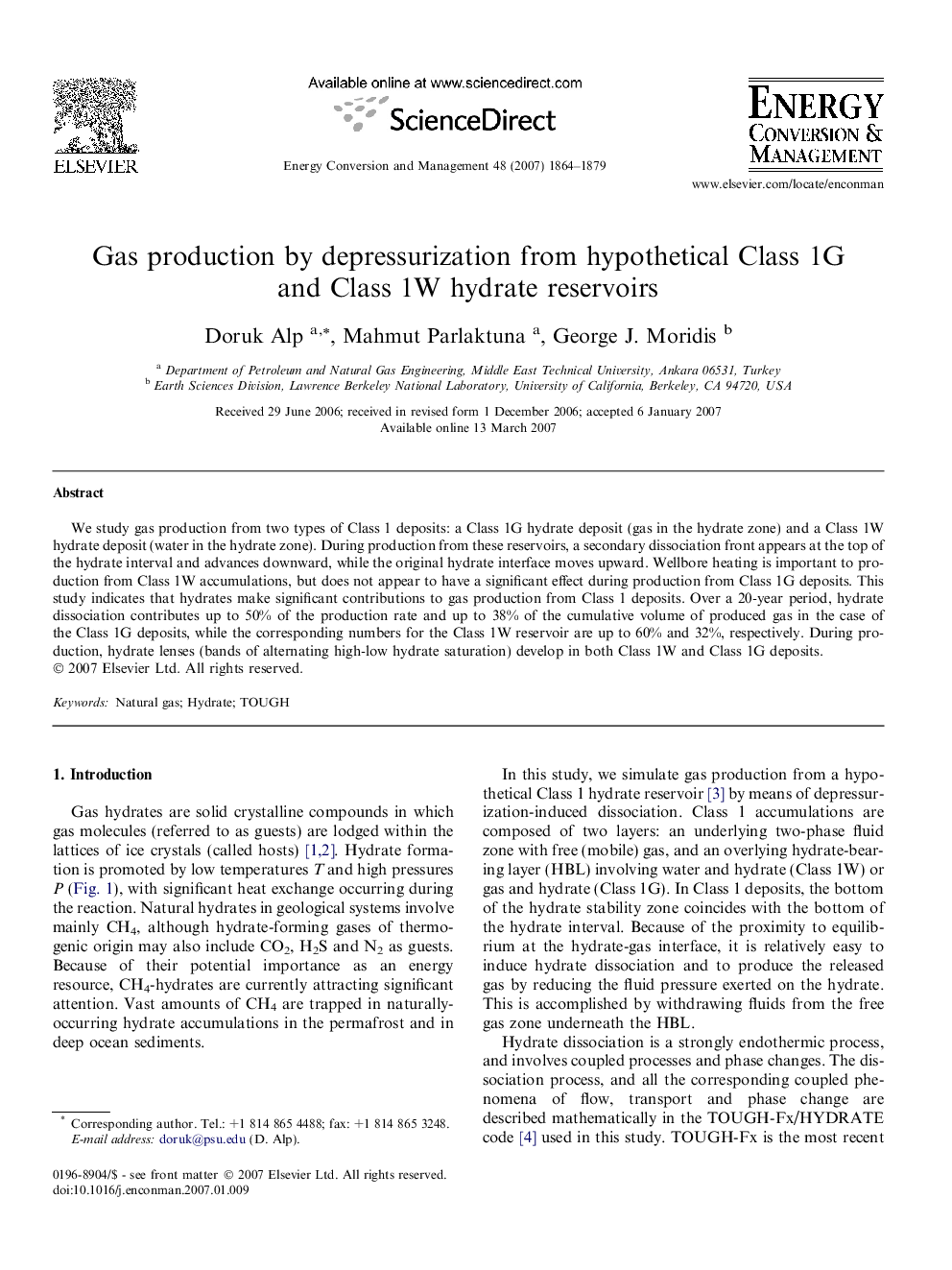| کد مقاله | کد نشریه | سال انتشار | مقاله انگلیسی | نسخه تمام متن |
|---|---|---|---|---|
| 765333 | 897033 | 2007 | 16 صفحه PDF | دانلود رایگان |

We study gas production from two types of Class 1 deposits: a Class 1G hydrate deposit (gas in the hydrate zone) and a Class 1W hydrate deposit (water in the hydrate zone). During production from these reservoirs, a secondary dissociation front appears at the top of the hydrate interval and advances downward, while the original hydrate interface moves upward. Wellbore heating is important to production from Class 1W accumulations, but does not appear to have a significant effect during production from Class 1G deposits. This study indicates that hydrates make significant contributions to gas production from Class 1 deposits. Over a 20-year period, hydrate dissociation contributes up to 50% of the production rate and up to 38% of the cumulative volume of produced gas in the case of the Class 1G deposits, while the corresponding numbers for the Class 1W reservoir are up to 60% and 32%, respectively. During production, hydrate lenses (bands of alternating high-low hydrate saturation) develop in both Class 1W and Class 1G deposits.
Journal: Energy Conversion and Management - Volume 48, Issue 6, June 2007, Pages 1864–1879